In this article, we will explore Paul’s first missionary journey looking at key points, locations, lessons we can learn, and a map of his journey.
Modern missionaries often get their inspiration from the incredible missionary journeys of the apostle Paul, and with good reason. In many ways, Paul was one of the first people who purposefully traveled long distances to unreached people to spread the gospel as Jesus commanded.
Though he rarely traveled alone, he was the apostle (“sent one”) and, in many ways, the leader of the group. There’s much we can learn from his journeys and apply to our spiritual lives, and you don’t have to be a full-time missionary to glean from it.
So, let’s see what happened on Paul’s first missionary journey and how we can grow spiritually from that.
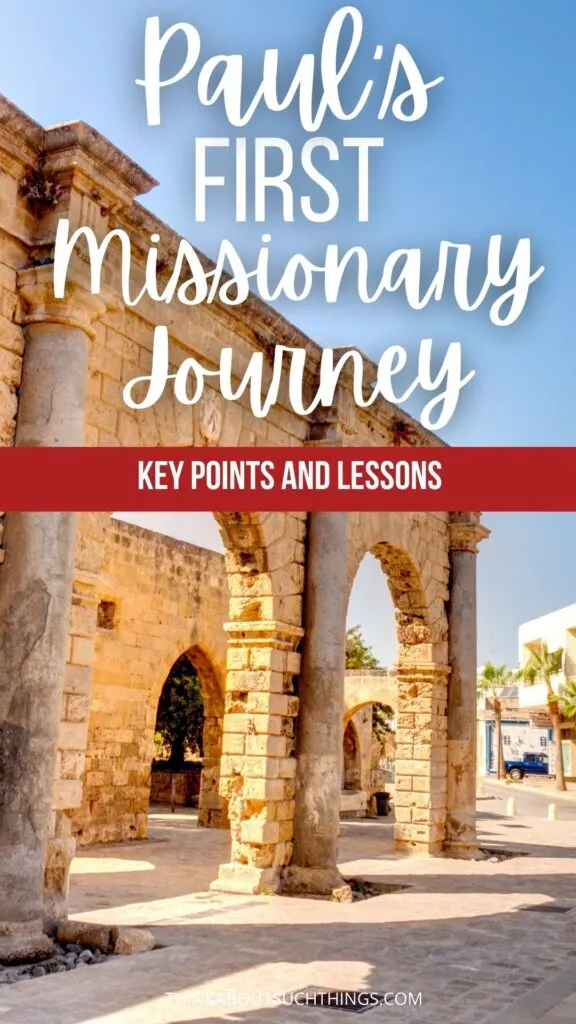
Table of Contents
What Happened On Paul’s First Missionary Journey?
Paul’s first missionary journey started during a prayer meeting in Antioch, Syria. We see in Acts 13:1-2 that a group of at least five prophets and teachers were gathered in prayer when the Holy Spirit told them to set Paul and Barnabas apart for the work that God called them for. The group fasted and prayed before sending them off.
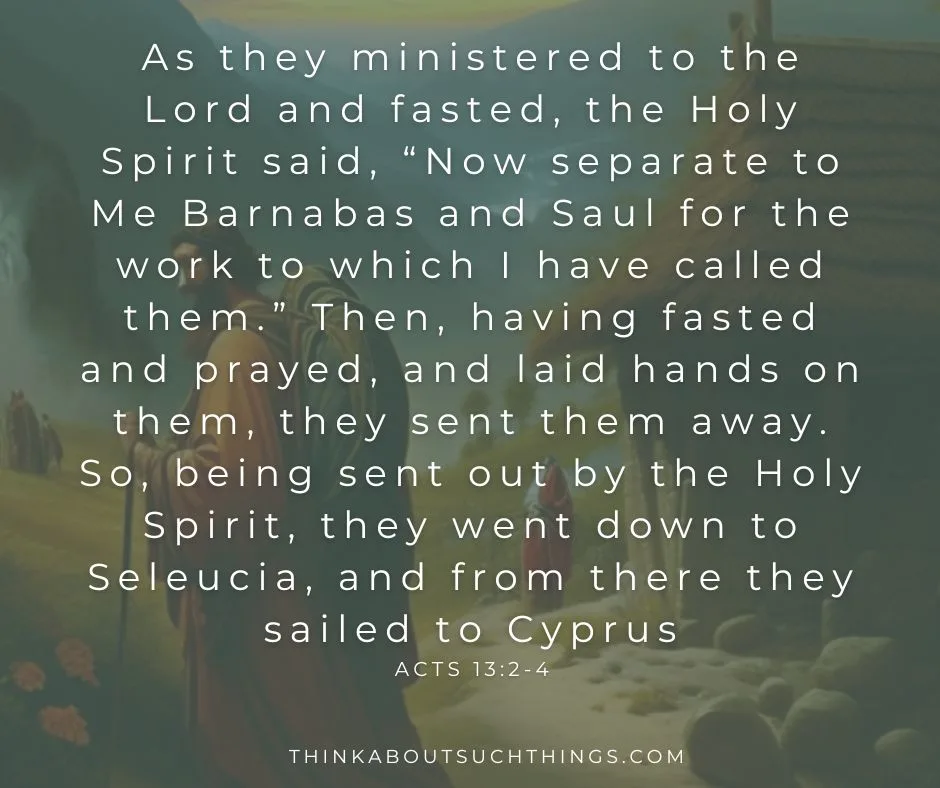
Before we get started, I do want to give a big thank you to Free Bible Images for letting me use their images of Paul’s journey.
Cyprus – Salamis and Paphos
John Mark accompanied Paul and Barnabas in the beginning. They set off for Cyprus, an island off the coast of Turkey, and when they got to the port of Salamis, they preached the gospel in the Jewish synagogues.
It’s important to note that, at this time, many still considered the gospel to be exclusively for the Jews, which is why they focused on preaching in the synagogues.
The Bible doesn’t tell us how the Jews in Salamis received the gospel. All we know is that the three then went on across the island of Cyprus and got to the city of Paphos. This is where they were confronted by a sorcerer named Bar-Jesus, who was also a Jewish false prophet.
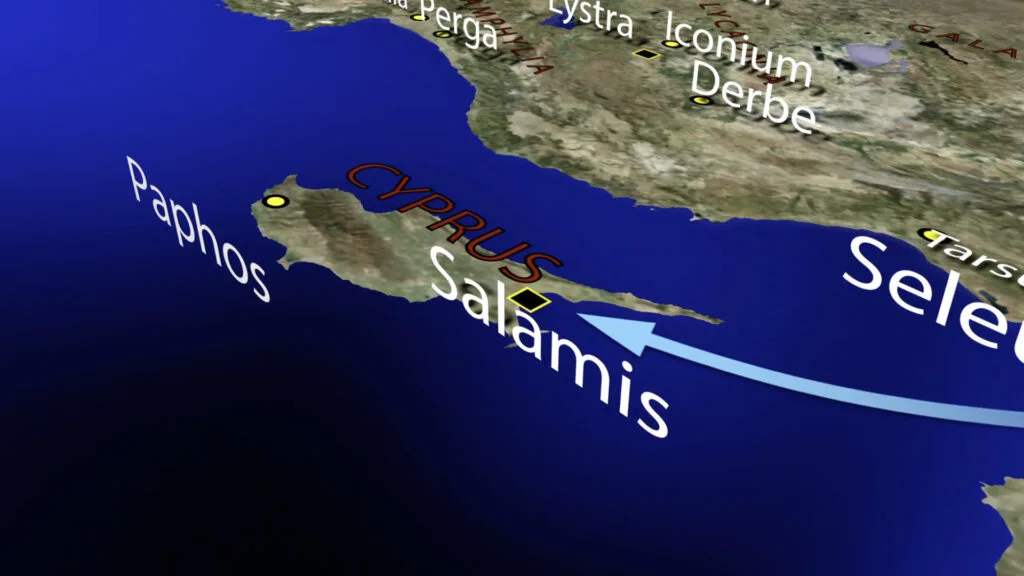
Bar-Jesus tried to keep the missionary team from seeing the Roman Proconsul, Sergius Paulus, who had requested to see them to hear the gospel.
However, Paul did not let the man stop them but instead identified the demons involved, after which Bar-Jesus was struck with temporary blindness.
Then Saul, who also is called Paul, filled with the Holy Spirit, looked intently at him 10 and said, “O full of all deceit and all fraud, you son of the devil, you enemy of all righteousness, will you not cease perverting the straight ways of the Lord? 11 And now, indeed, the hand of the Lord is upon you, and you shall be blind, not seeing the sun for a time.” And immediately a dark mist fell on him, and he went around seeking someone to lead him by the hand. - Acts 13:9-11 NKJV
Interestingly, this had the exact opposite result that Bar-Jesus had hoped – the proconsul believed and accepted the gospel partly because he saw what happened to the sorcerer at a mere word from Paul.
God can take something that is meant as a hindrance and turn it around for His glory.
Perga
The trio’s next stop was Perga, which was in Pamphylia, or Turkey as we know it today. Here a few interesting things happened that had significant repercussions.
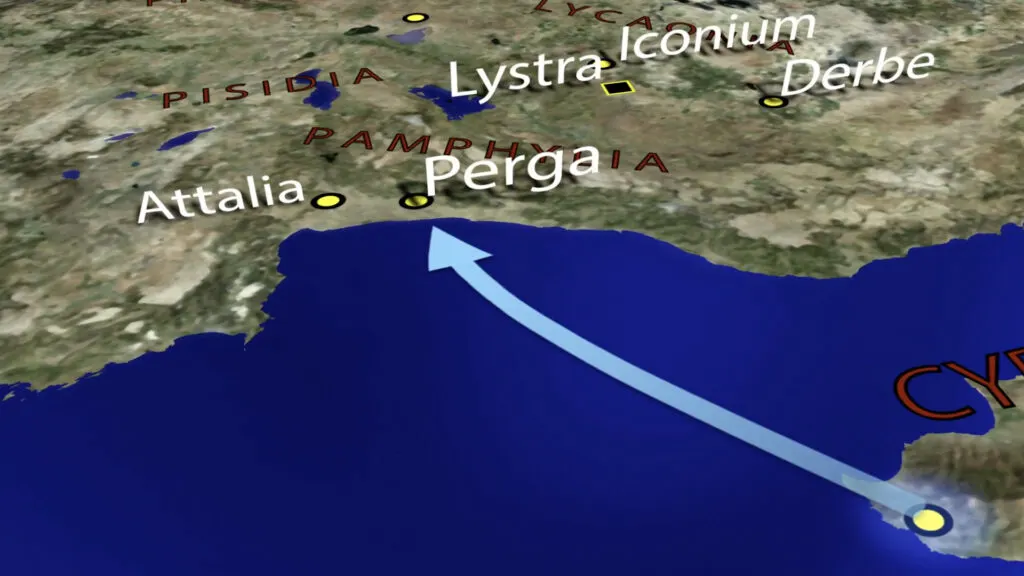
The first notable thing the Bible tells us here is that John Mark left the group and returned to Jerusalem. This is not explained in detail, but within the context of other passages, it seems that he and Paul had a falling out.
Experts believe it’s either to do with Mark being unable to keep up with Paul’s aggressive ministry style or that Mark wanted to report to the church in Jerusalem (the “head office” at the time) that Paul was preaching the gospel to Gentiles.
Whatever the reason, there are a few crucial things that happened because of this:
- Paul and Barnabas split up during later missionary trips because Barnabas wanted to take Mark along, while Paul didn’t. This effectively doubled the missionary efforts and caused the gospel to spread much faster.
- Mark spent a lot of time with Simon Peter in Jerusalem, who disciplined him further, and in the end, Mark wrote one of the gospels, which possibly would not have happened if he had stuck it out with Paul.
- Mark became indispensable to Paul in his later life, supporting him in ministry.
Aristarchus my fellow prisoner greets you, with Mark the cousin of Barnabas (about whom you received instructions: if he comes to you, welcome him), – Colossians 4:10
Only Luke is with me. Get Mark and bring him with you, for he is useful to me for ministry. – 2 Timothy 4:11
The second important thing is that Paul preached to the Jews, who were so impressed that they invited him to return to preach more, but they got jealous when they saw how many people showed up to hear Paul’s preaching and started insulting him.
This motivated Paul to focus on the Gentiles, instead, who received the gospel with gladness (13:48).
The Jews got even more upset and drove Paul and Barnabas from the region, after which they went to Iconium.
Iconium
As was their habit, Paul and Barnabas preached at the synagogue in Iconium, but not to the Jews only. The Greeks were also present. God did many signs and wonders by the apostles’ hands, and many Jews and Greeks believed the gospel because of these signs.
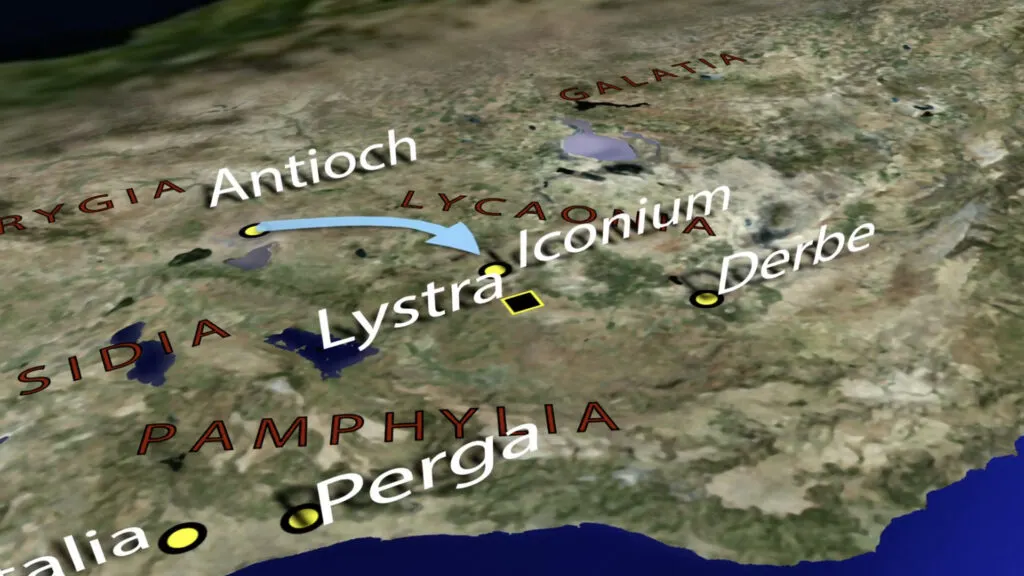
However, some non-believing Jews divided the city against Paul and Barnabas and started plotting to have them stoned (Acts 14:5).
So, after preaching in Iconium for a long time, they were forced to flee the region and go to Lystra and the surrounding areas to preach there.
Lystra
And in Lystra a certain man without strength in his feet was sitting, a cripple from his mother’s womb, who had never walked. 9 This man heard Paul speaking. Paul, observing him intently and seeing that he had faith to be healed, 10 said with a loud voice, “Stand up straight on your feet!” And he leaped and walked. - Acts 14:8-10
As Paul was preaching in Lystra, a disabled man sat and listened to him. Paul gave the command for the man to be healed, and he jumped up and walked.
This made the area’s people believe that Paul and Barnabas were the Greek gods Zeus and Hermes. They tried to worship them, which they resisted and told them not to do.
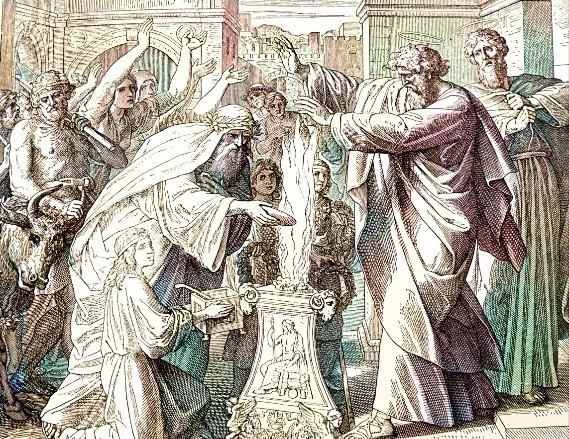
However, as promising as the outreach had been, some of the Jews from Iconium and Antioch had followed Paul and Barnabas to Lystra and turned the crowds against them.
They stoned Paul in an attempt to kill him and dragged him out of town, believing he was dead. However, Paul rose and accompanied the disciples back into the city.
Derbe And The Home Stretch
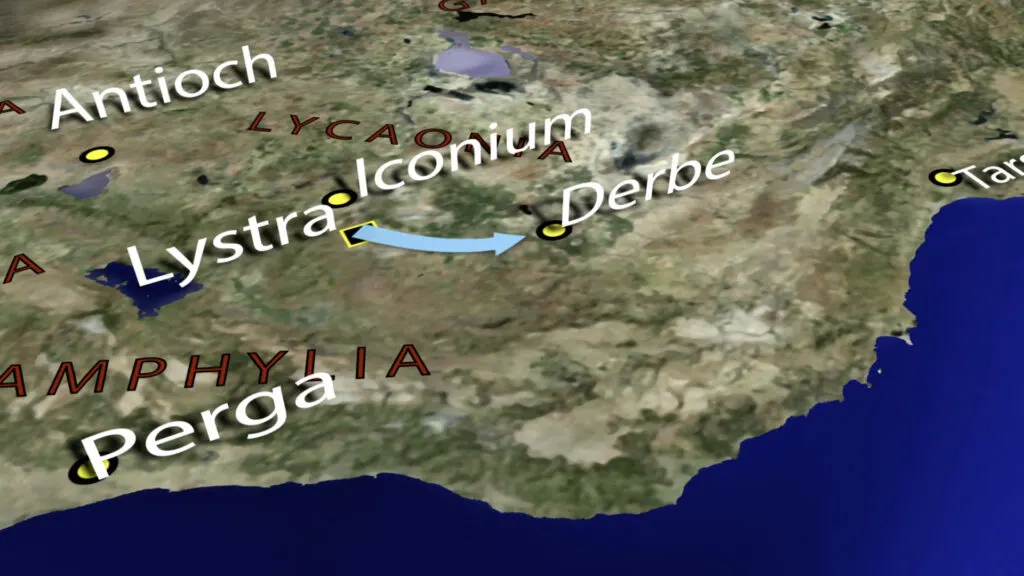
The next day, Paul and Barnabas went from Lystra to Derbe, where they preached the gospel and made many new disciples. Then they started their journey back to Antioch in Syria, the church that had sent them out.
On their way back, they passed through the cities they had preached in – Lystra, Iconium, and Perga – to encourage the disciples and appoint elders for the churches there.
Check Out Paul’s Other Missionary Journeys:
Maps of Paul’s First Missionary Journey
As a visual person, I find looking at images and maps very helpful, especially when looking at certain Biblical journeys and events. The overall map of Paul’s first journey is below.
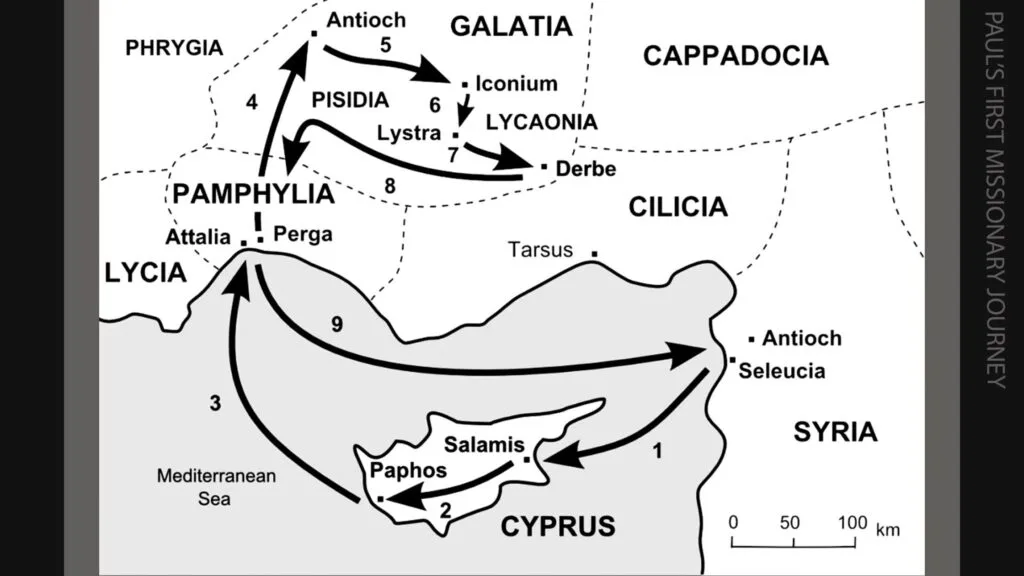
This map below is a little more realistic. It doesn’t show Paul’s journey path, but it shows the cities and the terrain better.
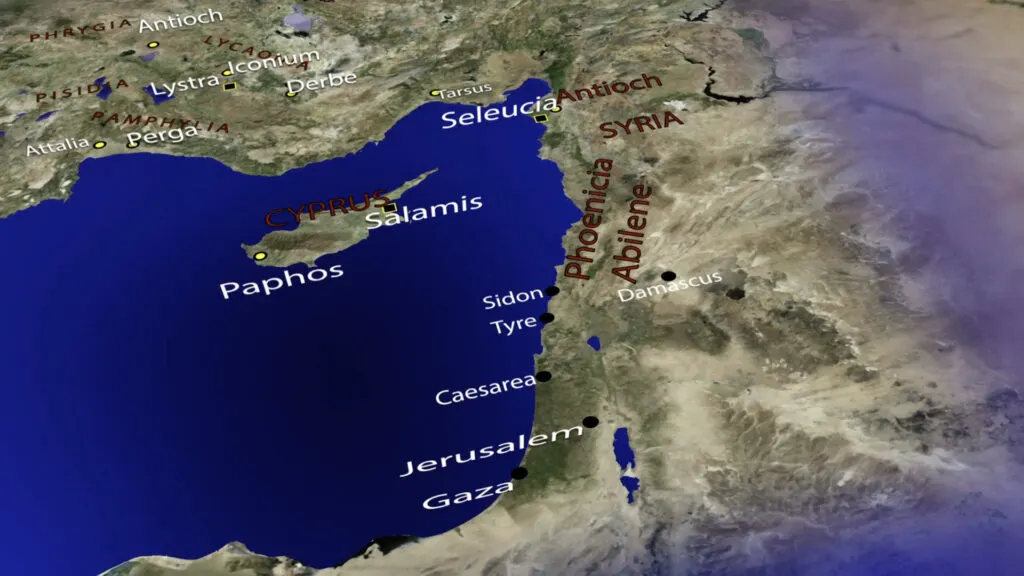
Lessons For Christians On Paul’s 1st Journey
We can learn many things from Paul’s missionary journey, and God tends to reveal more each time you study it. But here are a few notable lessons for modern believers from Paul’s first missionary journey:
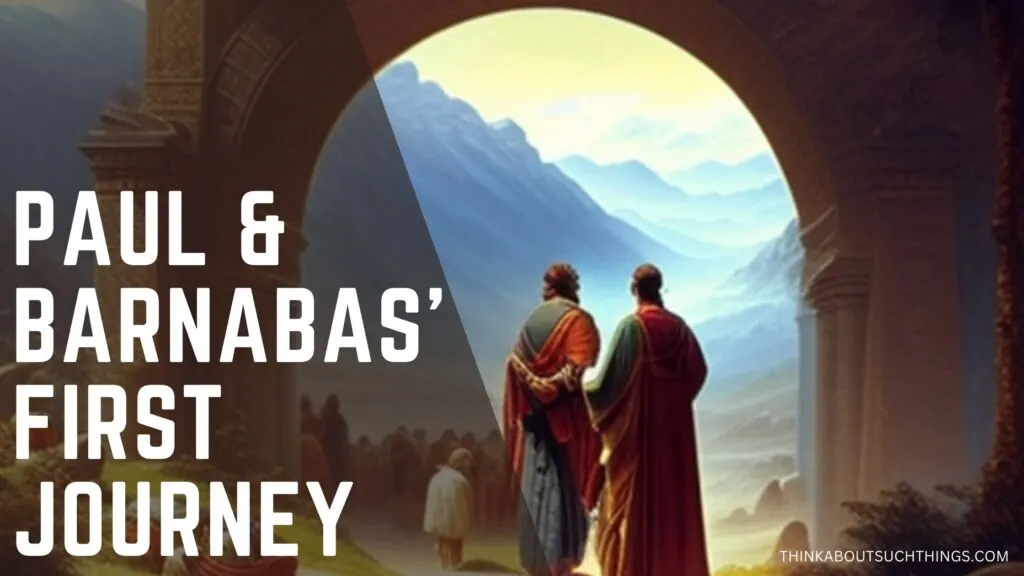
- We know that all believers are called to spread the gospel, but our efforts should always go hand in hand with the guidance of the Holy Spirit and be confirmed during fasting and prayer.
Yes, God can turn our mistakes into victories, but with significant steps like a 1,400-mile missionary journey, it’s good to be sure before we start, just like Paul’s journey started with prayer. - The enemy will try to stop us when we live a life dedicated to sharing the gospel and building God’s Kingdom. But God can turn that opposition into a miracle that will prove His power and glory to all if we stand firm and are willing to risk everything for our faith, just like He did when Bar-Jesus opposed the team.
- Like Paul and John Mark, we don’t always get along with our fellow believers, and sometimes our missions take us in opposite directions.
However, we are still called to love and support one another as members of one body. Besides, we never know when God will bring us back together, and we could find strength in unlikely alliances. - God will not hesitate to perform signs and wonders to show His power if it is to expand His kingdom. We can see in Mark 16:20 that the disciples went out and preached the gospel everywhere and that God confirmed the message by accompanying signs.
As long as we seek the kingdom and aim to share the gospel, God will work with us to accomplish that goal.
Key People On Paul’s 1st Journey
Here is a quick look at key players during the 1st missionary journey.
Paul
Paul, also known as Saul of Tarsus, was an important figure in the Bible who played an instrumental role in spreading Christianity. Born in the city of Tarsus, Paul was a devout Jew and Pharisee who was initially hostile towards the teachings of Jesus. However, he underwent a transformation on the road to Damascus where he claimed to have had a divine encounter with Christ. From there, Paul dedicated his life to preaching the gospel and writing numerous letters, or epistles, which are now part of the New Testament.
Barnabas
Barnabas was a Levite from Cyprus and a follower of Jesus Christ. In the Bible, he was first mentioned in the book of Acts, where he sold a field he owned and gave the proceeds to the apostles to support the early church. Barnabas was known for his generosity and kindness towards others, which earned him the nickname, “Son of Encouragement.”
John Mark
John Mark was a companion of the Apostle Paul and is commonly believed to be the author of the Gospel of Mark. In the book of Acts, John Mark is also mentioned as the cousin of Barnabas and as a helper in various mission trips. However, there is also a record of John Mark abandoning Paul and Barnabas in one of their missions, causing a rift between the two men, which later was reconciled.
Bar-Jesus
Bar-Jesus, was a Jewish sorcerer and false prophet who opposed the teachings of Paul and Barnabas. He tried to prevent the Roman proconsul, Sergius Paulus, from accepting Christianity, but Paul, filled with the Holy Spirit, called him out for his deceit and struck him blind.
Sergius Paulus
Sergius Paulus was the Roman proconsul of Cyprus. He is significant to biblical history as he became a follower of Christ after witnessing the power of God through the evangelist Paul. Sergius Paulus was a man of authority and intellect, yet he was humbled by the miraculous events that occurred before him.
FAQ About Paul’s First Missionary Journey
Here are some common FAQ asked about Paul’s 1st trip.
Paul’s first missionary journey was incredibly eventful. They attempted to kill him and almost succeeded once. Not everyone received the gospel with gladness. And yet, they pushed on and accomplished some great things, converting many people to Christianity and establishing new churches as they went. We should take that as an encouragement to share the gospel with everyone we meet.
And as always, if you would like to leave me a comment. I would love to hear from my readers and what God is doing in your life.

Melissa is a passionate minister, speaker and an ongoing learner of the Bible. She has been involved in church and vocational ministry for over 18 years. And is the founder of Think About Such Things. She has the heart to equip the saints by helping them get into the Word of God and fall more in love with Jesus. She also enjoys family, cooking, and reading.
She has spoken in churches in California, Oregon, Texas, and Mexico and has been featured in Guidepost Magazine and All Recipes Magazine. Read More…



Rosemary
Saturday 28th of December 2024
I'm happy reading your book am rose born again Christian I have been praying for a job but I know My God is able he's going to answer me be blessed.amen
Sarah cook
Friday 14th of April 2023
I love reading your book thank you .. I'm born again Christian and was married to my husband 3 years ago and 3 months ago he left me .I'm hoping he will come back please keep me in your prayers. Sarah